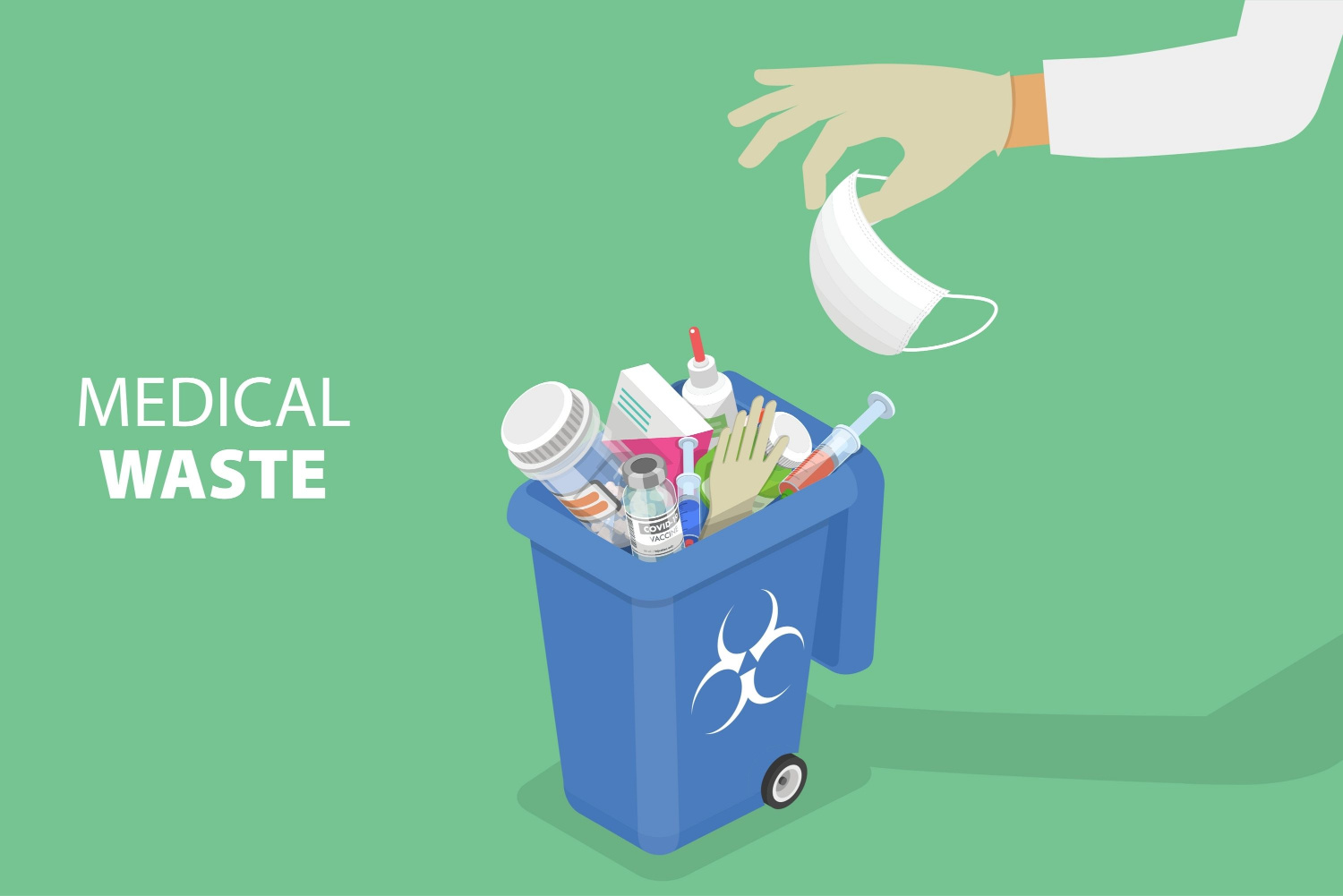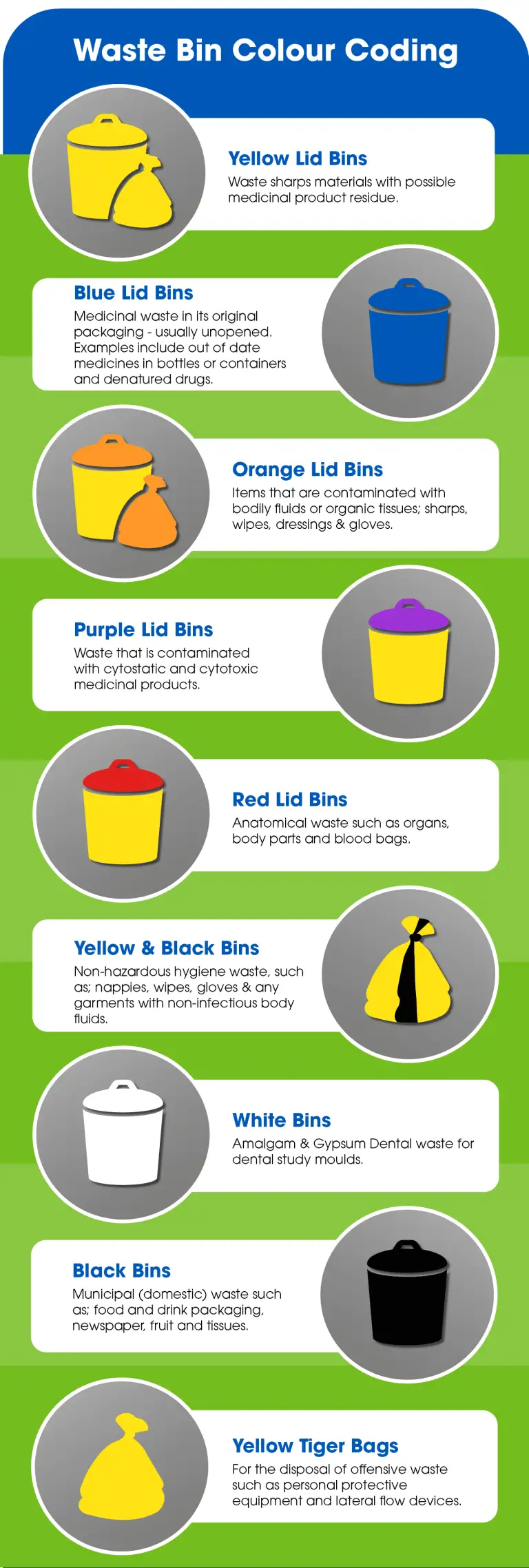Effective and Accountable Medical Waste Removal: Protecting People and the Planet
Wiki Article
Ideal Practices for Medical Waste Management
Clinical waste management is an essential element of health care centers' operations to make certain the safety of patients, personnel, and the environment. Implementing best techniques in medical waste management is vital to decrease the risks associated with contaminated materials. This includes appropriate partition and classification of waste, guaranteeing its safe storage and labeling, adhering to regulative guidelines, and utilizing effective disposal techniques. By complying with these finest techniques, medical care facilities can lower the possibility for infections, injuries, and pollution triggered by inappropriate handling and disposal of clinical waste. This intro intends to supply a summary of the value of ideal techniques for clinical waste management and the subsequent sections will certainly delve right into each method carefully - medical waste disposal service.
Partition and Classification
In the area of medical waste monitoring, proper partition and classification are crucial methods for making certain the safe and efficient disposal of healthcare-related products. Clinical waste is created from different resources, consisting of healthcare facilities, centers, labs, and other medical care facilities. It includes a wide variety of items, such as needles, syringes, bandages, gloves, and pharmaceutical waste.Partition involves the organized splitting up of various sorts of clinical waste based upon their attributes and prospective risks. This process aids to stop cross-contamination and makes certain that each kind of waste is dealt with suitably. For instance, sharps waste, such as blades and needles, must be positioned in puncture-resistant containers to stop injuries and the spread of contagious diseases. In a similar way, contagious waste, such as blood-soaked plasters or cultures, should be set apart and treated independently to lessen the threat of spreading virus.
Categorization is the process of identifying medical waste right into different classifications based upon its potential threats. These groups might consist of contagious waste, contaminated materials, pharmaceutical waste, and basic waste. By classifying waste, medical care centers can establish the appropriate disposal approaches and make certain conformity with regional laws and guidelines.
Appropriate partition and classification of clinical waste not only secure the health and wellness of healthcare workers and the public yet also add to the general effectiveness and efficiency of waste management. It reduces the risk of accidents, minimizes ecological influences, and advertises responsible waste disposal practices.
Correct Storage and Labeling
To make sure the risk-free and efficient disposal of medical waste, health care facilities have to comply with correct storage and labeling practices. WasteX Medical Waste Disposal. Correct storage and labeling play a vital role in preserving the integrity of clinical waste management systems and protecting the health and wellness of healthcare workers, people, and the publicWhen it comes to storage, it is important to have actually assigned locations especially developed for different kinds of clinical waste. These areas should be secure, well-ventilated, and outfitted with suitable containers that fulfill governing standards (medical waste disposal service). Partition and categorization of waste need to also be thought about to prevent cross-contamination and prospective dangers

Regular surveillance and examination of storage areas and containers are necessary to determine any type of concerns or offenses. Personnel ought to be educated on correct storage space and labeling techniques, highlighting the significance of conformity with regulations and protocols.
Safe Transportation and Handling
Making sure the safe and proper transport and handling of medical waste is vital for keeping the integrity of waste management systems and protecting the health and wellness of all entailed. Medical waste, that includes items polluted with infectious products, pharmaceuticals, and various other dangerous substances, have to be transported in a manner that avoids leakages, spills, and possible contamination.To attain safe transport and handling, several ideal practices must be followed. It is essential to utilize watertight and puncture-resistant containers that are specifically developed for clinical waste. These imp source containers need to be correctly secured and classified to stop any accidental exposure or messing up. In addition, waste should be set apart based on its nature and type to avoid cross-contamination.
Throughout transportation, it is vital to guarantee that waste containers are securely fastened and stored in a steady way. Vehicles used for delivering clinical waste must be equipped with appropriate safety features, such as spill control systems, to minimize the danger of any type of leaks or spills. Drivers ought to get training on appropriate handling and emergency reaction treatments to properly resolve any kind of unpredicted occurrences.
In addition, the transport and handling of clinical waste ought to abide by all pertinent laws and standards established forth by regional, state, and government authorities. WasteX Medical Waste Disposal. medical waste removal. Regular examinations and audits ought to be conducted to assess conformity and identify any type of locations for improvement
Conformity With Regulatory Guidelines
Keeping compliance with regulatory standards is crucial for efficient medical waste administration. These guidelines are established to shield public health and wellness and the atmosphere by making sure that clinical waste is correctly managed, dealt with, and disposed of. Conformity with governing guidelines aids to avoid the spread of contagious diseases, reduce potential dangers, and reduce the total effect of clinical waste on the environment.To accomplish conformity, health care centers must remain educated regarding the details regulations regulating clinical waste management in their territory. These laws may vary from country to nation, and even within different states or regions. It is vital for healthcare facilities to have a thorough understanding of these guidelines and to execute proper techniques and procedures to ensure compliance.
One secret element of conformity is the proper segregation and labeling of different sorts of clinical waste. This includes separating sharps from other waste, as well as classifying waste based on its prospective dangers. Healthcare centers have to likewise make sure that medical waste is stored in suitable containers and that these containers are effectively classified and secured.
In addition, conformity with governing standards requires healthcare centers to develop correct training and education and learning programs for employee associated with medical waste management. This includes providing training on waste partition, managing, and disposal procedures, along with the correct usage of personal protective tools.
Normal surveillance and audits are likewise important to make certain recurring conformity with regulative guidelines. This includes conducting normal inspections of waste storage space areas, recording waste administration procedures, and maintaining records of waste disposal.
Effective Disposal Approaches
Health care centers need to utilize effective disposal approaches for correct monitoring of medical waste. Incorrect disposal of medical waste can pose severe health and wellness and environmental dangers. There are numerous techniques that can be utilized to properly throw away clinical waste, making sure the safety of health care employees, patients, and the general public.One typically made use of technique is incineration. Incinerators can securely shed clinical waste at heats, minimizing the volume and damaging any type of possibly dangerous pathogens. Incineration can be pricey and may release unsafe pollutants into the air if not effectively controlled.
Another technique is autoclaving, which entails subjecting the waste to high-pressure heavy steam. This procedure kills bacteria, infections, and various other bacteria, providing the waste safe for disposal in routine waste streams. Autoclaving is a eco pleasant and effective technique, yet it needs specialized tools and qualified employees.
Chemical disinfection is likewise made use of in many cases, where fluid chemicals are related to the waste to sanitize it. This approach is less commonly utilized because of problems about the effectiveness of chemical disinfection and the possibility for chemical deposits to infect the atmosphere.
Along with these techniques, health care facilities need to also carry out correct segregation, product packaging, and labeling of medical waste to guarantee its risk-free handling and disposal. Normal training and education and learning of staff on correct waste administration techniques are critical to preserving reliable disposal methods.
Final Thought
In final thought, implementing finest techniques for clinical waste monitoring is crucial for making sure the safety of healthcare workers, patients, and the atmosphere. By effectively setting apart and classifying waste, keeping and classifying it properly, guaranteeing risk-free transportation and handling, abiding by regulative guidelines, and employing reliable disposal approaches, healthcare centers can successfully handle and reduce the threats related to clinical waste. It is critical for medical care organizations to adhere and prioritize to these finest methods to maintain a secure and lasting medical care setting.Clinical waste monitoring is a crucial facet of health care facilities' operations to guarantee the security of clients, staff, and the environment. Carrying out ideal techniques in medical waste monitoring is important to decrease the risks connected with unsafe waste. These groups may consist of contagious waste, unsafe waste, pharmaceutical waste, and general waste.In verdict, carrying out ideal methods for medical waste management is crucial for guaranteeing the security of healthcare employees, clients, and the setting. By correctly setting apart and categorizing waste, keeping and labeling it correctly, making certain risk-free transportation and handling, conforming with governing standards, and employing efficient disposal approaches, medical care facilities can successfully manage and lessen the threats linked with clinical waste.
Report this wiki page